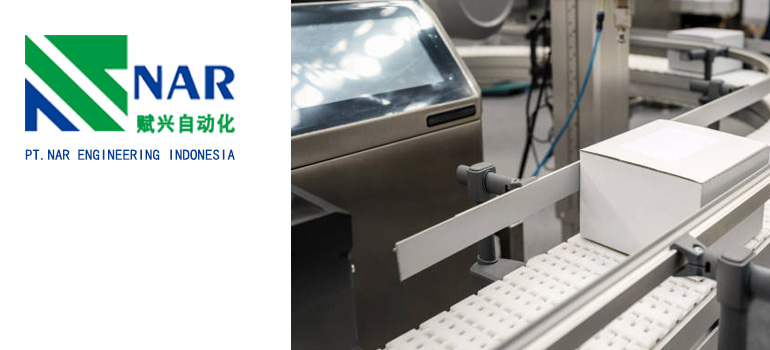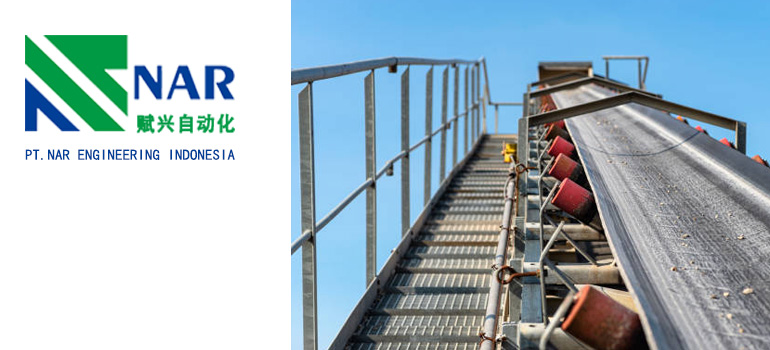Summary:
How Telescopic Conveyor Belts Can Reduce Your Operating Costs
What is a Telescopic Conveyor Belt?
Cost-Saving Benefits of Telescopic Conveyor Belts
Enhancing Workflow Efficiency with Telescopic Conveyor Belts
Real-World Applications of Telescopic Conveyor Belts
Tips for Implementing Telescopic Conveyor Belts
In today’s logistics and warehousing industries, telescopic conveyor belts are becoming essential equipment. Designed for flexibility and efficiency, they excel in a variety of operations.
What is a Telescopic Conveyor Belt?
So, what exactly is a telescopic conveyor belt? Simply put, it is a conveyor system that can extend and retract based on operational needs. This design allows for efficient loading and unloading of goods, making them particularly useful in docks, distribution centers, and large warehouses. With straightforward controls, operators can easily adjust the length of the conveyor belt to accommodate different types of cargo and space requirements.
Key Features of Telescopic Conveyor Belts
The key features of telescopic conveyor belts set them apart in many applications. First, they are typically constructed from high-strength materials capable of carrying a variety of load weights. Additionally, their mobility allows operators to quickly and easily adjust the belt’s length, which is crucial in busy work environments. Many modern telescopic conveyor belts also come equipped with automation features that can seamlessly integrate with other equipment, further enhancing operational efficiency.
How Telescopic Conveyor Belts Differ from Traditional Conveyors
Compared to traditional conveyors, telescopic conveyor belts offer more flexibility and adaptability. Traditional conveyors are often fixed in length and cannot be adjusted based on specific needs. In contrast, telescopic conveyor belts can extend or retract according to different loading and unloading requirements, significantly reducing operation time and labor costs. Furthermore, they excel in space utilization, as they can be completely retracted when not in use, saving valuable warehouse space.
Overall, understanding the basic concepts and features of telescopic conveyor belts is the first step in recognizing their potential to lower operational costs. In the following sections, we will delve deeper into how these conveyor systems enhance efficiency and provide significant economic benefits for businesses.
Cost-Saving Benefits of Telescopic Conveyor Belts

Implementing telescopic conveyor belts in your operations can lead to substantial cost savings. These versatile systems not only enhance efficiency but also contribute to significant reductions in various operational expenses.
Reducing Labor Costs with Automation
One of the primary benefits of telescopic conveyor belts is their ability to reduce labor costs. By automating the loading and unloading processes, businesses can minimize the number of workers needed for these tasks. With a telescopic conveyor belt, a single operator can efficiently manage the movement of goods without the need for additional personnel. This not only cuts down on labor expenses but also allows staff to focus on other critical tasks, further enhancing productivity.
Minimizing Equipment Damage and Maintenance Expenses
Another cost-saving advantage of telescopic conveyor belts is their ability to minimize equipment damage and maintenance costs. Traditional conveyor systems can be more prone to wear and tear due to constant manual handling of goods. In contrast, telescopic conveyor belts provide a smoother, more controlled movement of products, reducing the risk of drops and damage during loading and unloading. This translates to lower maintenance costs over time, as well as fewer replacements for damaged goods and equipment.
Efficient Space Utilization in Warehousing
Telescopic conveyor belts also contribute to cost savings through improved space utilization. Their retractable design allows businesses to optimize their warehouse layout by using space more effectively. When not in use, these belts can be fully retracted, freeing up valuable floor space for other operations. This flexibility is particularly beneficial in environments where space is limited, enabling companies to maximize their storage capacity without the need for costly expansions or relocations.
Overall, the cost-saving benefits of telescopic conveyor belts extend beyond just initial investment. By reducing labor costs, minimizing maintenance expenses, and optimizing space utilization, these systems provide a comprehensive solution for businesses looking to improve their bottom line. In the following sections, we will explore additional ways these conveyor belts enhance workflow efficiency and contribute to long-term savings.
Enhancing Workflow Efficiency with Telescopic Conveyor Belts
Telescopic conveyor belts play a crucial role in improving workflow efficiency across various industries. By streamlining operations, these systems not only accelerate processes but also contribute to a more organized and productive work environment.
Streamlining Loading and Unloading Processes
One of the most significant advantages of telescopic conveyor belts is their ability to streamline loading and unloading processes. These belts can extend directly to the back of trucks or containers, allowing for quick and efficient transfer of goods. This direct access reduces the time spent moving products between the vehicle and the warehouse, leading to faster turnaround times. In high-volume environments, this speed can greatly enhance overall operational efficiency, allowing businesses to handle more shipments in less time.
Improving Product Handling and Safety
Telescopic conveyor belts also improve product handling, which is vital for maintaining efficiency. With a controlled and consistent flow of goods, the risk of product damage is minimized. Additionally, these belts can be adjusted to the optimal height for workers, reducing the need for bending or reaching that can lead to injuries. By prioritizing safety and ergonomics, companies can reduce downtime due to accidents or injuries, ensuring that operations run smoothly without interruptions.
Boosting Overall Operational Speed
The integration of telescopic conveyor belts into existing systems can significantly boost overall operational speed. Their ability to quickly adjust to different lengths means they can accommodate various sizes of shipments without the need for additional equipment. This versatility allows businesses to adapt to changing demands swiftly. Furthermore, by automating repetitive tasks associated with loading and unloading, employees can focus on more strategic activities, such as inventory management and quality control, further enhancing the efficiency of the entire workflow.
In summary, telescopic conveyor belts not only enhance workflow efficiency by streamlining loading and unloading processes but also improve product handling and safety. By boosting overall operational speed, these systems enable businesses to meet customer demands more effectively. In the next sections, we will explore real-world applications of telescopic conveyor belts and how they can be implemented for maximum benefit.
Real-World Applications of Telescopic Conveyor Belts
Telescopic conveyor belts have a wide range of real-world applications across various industries, showcasing their versatility and effectiveness in enhancing operational efficiency. Here, we’ll explore how these systems are utilized in different sectors and the benefits they provide.
Case Studies in Various Industries
Many industries have successfully integrated telescopic conveyor belts into their operations. For instance, in the retail sector, distribution centers utilize these conveyor systems to manage the flow of goods from trucks to storage areas efficiently. By minimizing the time goods spend in transit, companies can quickly replenish stock and fulfill customer orders, ultimately improving service levels.
In the manufacturing sector, telescopic conveyor belts help streamline the movement of components between assembly lines. This integration allows manufacturers to maintain a steady flow of materials, reducing bottlenecks and improving production rates. Companies that have adopted this technology often report higher output and reduced labor costs due to enhanced workflow efficiency.
How Telescopic Conveyor Belts Are Used in E-commerce
The rise of e-commerce has further increased the demand for efficient logistics solutions. Telescopic conveyor belts are particularly valuable in e-commerce fulfillment centers, where speed and accuracy are crucial. These belts facilitate rapid loading and unloading of packages from delivery vehicles, allowing for quicker processing times. With the ability to extend to the exact height of delivery trucks, they help eliminate unnecessary handling, making the process smoother and more efficient.
Moreover, as e-commerce businesses scale up, the flexibility of telescopic conveyor belts allows them to adapt to fluctuating volumes. This adaptability means they can efficiently handle seasonal spikes in demand without the need for significant capital investment in additional equipment.
Telescopic Conveyor Belts in Freight and Logistics
In the freight and logistics industry, telescopic conveyor belts have revolutionized how goods are handled. Their ability to extend directly to shipping containers or trucks minimizes the need for additional machinery, reducing operational costs. Companies in this sector often use these belts at cargo handling terminals to streamline the movement of freight, ensuring faster turnaround times for shipping and receiving operations.
By enhancing the efficiency of loading docks, telescopic conveyor belts help logistics companies maintain a competitive edge. They allow for quicker processing of goods, enabling businesses to meet tight delivery schedules while maintaining high levels of customer satisfaction.
In summary, telescopic conveyor belts have a wide array of applications across industries, from retail and manufacturing to e-commerce and logistics. Their ability to improve efficiency, reduce labor costs, and adapt to various operational needs makes them an invaluable asset for businesses aiming to optimize their workflow. In the next sections, we’ll discuss tips for implementing telescopic conveyor belts effectively in your operations.
Tips for Implementing Telescopic Conveyor Belts
Successfully integrating telescopic conveyor belts into your operations requires careful planning and execution. Here are some essential tips to ensure a smooth implementation and maximize the benefits of these versatile systems.
Assessing Your Needs for a Telescopic Conveyor Belt
Before making any investment, it’s crucial to thoroughly assess your operational needs. Consider factors such as the types of goods you handle, the volume of shipments, and the specific loading and unloading requirements. By understanding these parameters, you can select the right type and size of telescopic conveyor belt that aligns with your business goals.
Additionally, evaluate your current workflow to identify areas where a telescopic conveyor belt can provide the most value. This might include pinpointing bottlenecks in your loading docks or inefficiencies in product handling. A well-defined needs assessment will guide your selection process and ensure you choose a solution that enhances your operations.
Integrating Telescopic Conveyor Belts into Existing Systems
Once you’ve selected the appropriate conveyor belt, the next step is integration. Collaborate with your equipment suppliers to ensure seamless compatibility with your existing systems. This may involve coordinating with your warehouse management system or other automation technologies to create a cohesive operation.
Training staff is also essential during the integration phase. Provide comprehensive training on how to operate the telescopic conveyor belt safely and efficiently. This will not only enhance productivity but also ensure that employees are comfortable using the new equipment, minimizing the risk of accidents.
Training Staff for Optimal Use of Telescopic Conveyor Belts
Investing in staff training is crucial for the successful implementation of telescopic conveyor belts. Ensure that all employees involved in the loading and unloading processes understand how to operate the equipment correctly. This includes proper techniques for extending and retracting the belts, as well as safety protocols to follow during operation.
Consider conducting regular training sessions and refresher courses to keep staff updated on best practices. Encourage feedback from employees who use the conveyor belts daily; their insights can help identify areas for improvement and further enhance operational efficiency.
By focusing on thorough needs assessment, seamless integration, and comprehensive training, businesses can effectively implement telescopic conveyor belts into their operations. This careful approach will help maximize the benefits of these systems, leading to increased efficiency, reduced costs, and improved overall performance.

